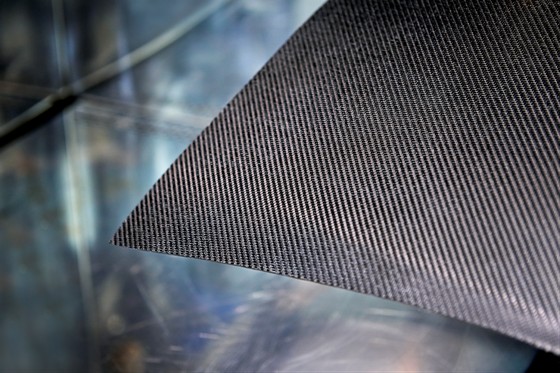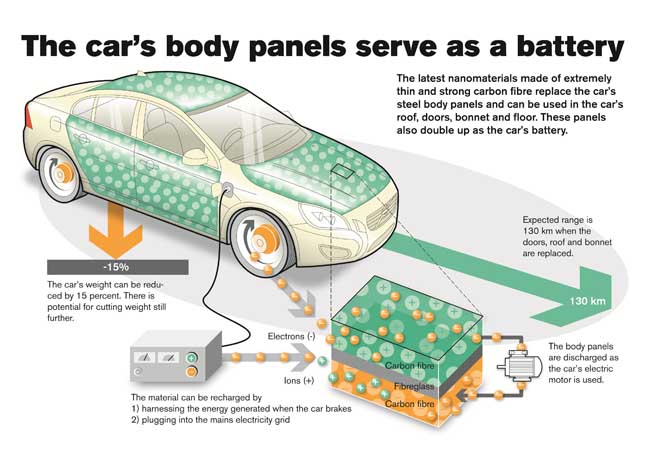The biggest limitation for electric vehicles (EV) is the battery. Tesla, General Motors, Nissan and others install heavy batteries that limit vehicle range and performance. The batteries take up as much as 15% of the vehicle’s total weight.
So Swedish automobile maker, Volvo (now owned by China’s Geely Holding Group) decided to dispense with the battery entirely, substituting a super capacitor made from advanced carbon fiber-based nano-materials that can be integrated into the body panels of the vehicle.
Volvo has chosen the S80 model to demonstrate this concept. The vehicles side body, doors, hood and roof panels are made of nano-material (see image below) that replaces the electric batteries used by conventional EVs. The vehicle plugs in to initially charge and then recharges the supercapacitor panels during braking. A single body panel like the hood can easily supply all the energy needed to run the vehicle’s internal electronics. Additional panels can power the drive train.
Volvo has yet to get beyond building a few of the panels but it is encouraged by early tests which show that the material stores energy much faster than conventional batteries. It also delivers its charge faster.
Integrating power storage into body panels is not a new idea. The Lola B12 69/E, an electric racing car that recently set a land speed record for EVs of 328 kilometers (204 miles) per hour, incorporates super capacitors and a fully-integrated drive train within the body of the vehicle.











Whatever the proposed Volvo E car might be, it will not likely be a car that replaces batteries or IC engines with super capacitors in the body panels. The energy storage density of super capacitors is even lower than lithium batteries. Think about it. If super capacitors could store much energy as efficiently as batteries, the Chinese would be building their versions of the Volt with a cheap super capacitor pack replacing the Volt’s expensive lithium battery pack. Or at least they would be selling their super capacitor power packs to GM. Until Volvo can power a practical motor vehicle with 800 pounds of super capacitors in its luggage compartment, it’s just silly to be talking about putting super capacitors in body panels.
In principle, capacitors can do a few desirable things chemical batteries cannot do. (1) Infinite numbers of charge and discharge cycles without significant degradation. (2) Sustain very high rates of charge and discharge. (3) Provide and allow much higher short-term current flows. (That makes them ideal energy storage candidates for regenerative braking and rapid acceleration).
The only rational automotive applications for them I can envision are in hybrid vehicles that have limited battery range such as Prius. Prius gets good fuel mileage mainly because of its efficient Atkinson cycle gasoline engine, not so much because of its electrical regenerative braking. There is some hypothetical possibility of reducing costs of batteries in all electric hybrid vehicles provided that the batteries don’t have to handle high current loads of regenerative braking or short periods of rapid acceleration. In principle, super capacitors could take the high current loads off the vehicle’s main lithium battery pack. The main battery pack might be made cheaper if it were intended only for relatively low current flows. It’s doubtful that it could be made enough cheaper to offset the extra costs of the super capacitor bank and needed ancillary circuit elements. I can only think the Volvo project is 99% PR bunkum that will never actualize as a consumer product.
[…] View the original here: New nano-material supercapacitor replaces EV car battery in … […]
[…] Volvo testing lightweight carbon fiber body panels to replace lithium batteries and deliver power to automobile components and drive train. […]
[…] have written about super capacitors on this blog site before, but it would seem to me that Kaner and El-Kady are on the edge of creating […]